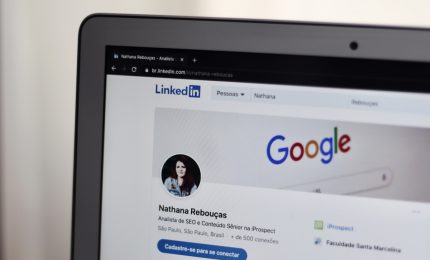Social media fatigue is real when you’re an entrepreneur. As the CEO, CMO, and CFO, you’re doing all your marketing in addition to running every other aspect of your business. And that’s exhausting.
However, if your audience is on social media, it’s important that you’re active on at least one or two platforms. What’s more, you need to be quick to respond to customer or client requests and consistent in posting to ensure you’re actually reaching and connecting with the people who want to connect with you.
And that’s where the social media fatigue sets in. But the good news is, you don’t have to accept and deal with it. If you’re struggling with social media fatigue, but you’re committed to maintaining your presence online, here are a few ways to minimize the exhaustion.
Get it All Done—Without the Burnout
What is Social Media Fatigue?
Social media fatigue is not a buzz-phrase or a self-help concept but an actual researched, scientific condition. As one study explains: “Social media fatigue is defined as a user’s tendency to back away from social media participation when s/he becomes overwhelmed with information.”
Not to mention, another study found that compulsive social media use causes social media fatigue, which is linked to high anxiety and depression.
Not only do you want to avoid the stress and anxiety of social media fatigue, but burning out to the point of avoiding it altogether is just as bad for business. Being active on social media is important for brand building, client acquisition, and website traffic.
So how do you keep up with social media with the Instagram hangover? With these simple strategies, all of which you can begin implementing today.
Set up Social “Office Hours”
Sarah K. Peck, author and founder of Startup Pregnant, ran four experiments to understand her relationship with social media usage, then documented the results in a brilliant HBR article. She tried everything from quitting cold-turkey for 30 days (not realistic for entrepreneurs) to uninstalling Facebook every day, but one of the most effective options was time-blocking dedicated social media time.
The goal is simple: establish social media “office hours,” dedicated time for specific social activities. Peck called hers a “happy hour” because it was a way to unwind at the end of the day.
The key to making this work is looking at all your social media efforts and make sure that you can build them into your office hours or social media happy hour every day—and this may mean focusing on just one platform each day to avoid the overwhelm. For example, your social media office hours schedule might look like this:
- Monday: Instagram engagement + publish LinkedIn Pulse article
- Tuesday: Twitter chat
- Wednesday: Twitter and Instagram engagement
- Thursday: LinkedIn engagement
- Friday: Instagram Live + Twitter and Instagram engagement
Take this one step further and set a timer so you don’t go over time. If your timeframe is one hour, set the timer for one hour and when it buzzes, you’re done. With clear boundaries you can better manage the anxiety and burnout.
Scroll With Intention
Stop mindlessly scrolling. Unless you have a specific purpose, I.E., market or competitor research, brainstorming new hashtags, engaging with potential clients, or checking in with personal friends, etc.—don’t just scroll to scroll.
Scrolling is an addiction. Aza Raskin, the creator of infinite scroll, the feature that constantly refreshes a feed and allows you to keep scrolling, explained in an interview with BBC that he feels guilty for unleashing a global scroll addiction.
“Behind every screen on your phone, there are like a thousand engineers that have worked on this thing to try to make it maximally addicting,” says Raskin. “It’s as if they’re taking behavioral cocaine and just sprinkling it all over your interface.” What’s more, scientific research corroborates the relationship between social platforms and addictive features.
If you’re just bored, distracted, or feeding your addiction—remember that mindless scrolling drains your creative resources and increases your social media fatigue. So when you do need to be on social media, establish a purpose and ideal time frame. Even if you’ve scheduled social office hours for the task, remind yourself why you’re there and what you want to accomplish.
For example, you might say to yourself:
- “I’m checking up on industry updates, and will spend 15 minutes on my LinkedIn feed.”
- “I need to check on comments on Instagram and engage with my audience. I’ll do this for ten minutes.”
- “I want to follow up with three conversations from yesterday and engage with the new people in my community.”
Use these intentions to stop going down the social media rabbit hole. Those sneaky five-minute scrolls here and there are a significant contributor to social media fatigue.
FREE DOWNLOAD: Tell Your Story: An Instagram Caption Checklist
Schedule Screen-Free Breaks
Notice how this tip isn’t “take screen-free breaks” but schedule them. You need to be intentional about screen-free time, or it won’t happen. You say you’ll take breaks, but then you get wrapped up in a project or go down a social media rabbit hole and hours pass. We’ve all been there.
This is especially important to do at night, as you’re winding down for the day. Scientific research shows that light-emitting electronics before bed “prolongs the time it takes to fall asleep, delays the circadian clock, suppresses levels of the sleep-promoting hormone melatonin, reduces the amount and delays the timing of REM sleep, and reduces alertness the following morning.”
Just like your social office hours, schedule screen-free time throughout the day and at night. You can even set a curfew for yourself so you keep it consistent each day. Don’t forget to schedule screen-free time into your day too—say, from 10am to 11am and 2pm to 3pm. These short breaks will leave you much more refreshed and less burnt out on social feeds.
Here are some ways to create that screen free time:
- Leave your laptop and phone in your office when you go to eat lunch. Recent research suggests that the mere presence of your phone reduces cognitive capacity.
- Set timers to take a mid-morning and -afternoon walk. Even five minutes can leave you feeling refreshed.
- Establish a morning routine that allows you to start your day with intention rather than immediately hopping on social media. Get started with my five pillars of an intentional morning.
- Make a rule that you won’t look at screens 30 minutes before bed.
Refine Your Social Strategy
In addition to taking breaks and dropping your scrolling habit, you can also optimize your process so that you don’t burnout. First and foremost, this starts with remembering that you don’t have to be on every platform—you just need to be where your clients are most active.
Using data, like the report from Sprout Social below, can help you see where potential clients are active. Match that up with your efforts and focus on doing a great job there, rather than spreading yourself thin between multiple platforms.
Image source: Sprout Social
The rule of thumb is quality over quantity. It’s better to have a strong social presence on a few relevant channels than a mediocre following on several. Be selective of where you put your energy and presence.
When in doubt, look at your data. Analyze metrics on past performance to see where you get the most engagement and ROI, then reinforce your efforts there. Also make peace with the fact that you might have to walk away from some channels.
For example, if TikTok is taking a lot of time but you see little to no engagement and minimal potential client interactions, refocus that time on a platform where you know you’re able to connect with your ideal client.
Keep Reading: Why Is Instagram Not Working for Your Business?
Automate Your Posting When Possible
A simple way to beat social media fatigue is to automate your processes as much as possible. While it might not seem like it, batch creating content and scheduling your evergreen posts will save you time each and every day that you can put toward other important activities like engaging with your community.
Honor Your Exhaustion
Listen to your intuition. If you’re drained and don’t feel like engaging or posting that day, don’t do it. When you’re inspired and creative, that will shine through in your content but if you’re just checking the boxes to get it done, that too will be obvious to your audience.
What’s more, if you’re feeling a certain way, share about it—it’s likely other entrepreneurs are as well. In a FastCompany article, Arianna O’Dell, founder of Airlink Marketing, explained that she was shocked others felt the same way about entrepreneur exhaustion:
“Before writing this article, I posted to social media asking if any other startup friends had also experienced health issues from running a business. Within minutes, my feed filled up with dozens of stories about hospital visits, handfuls of hair in the shower, and psychological breakdowns.”
Share your authentic story, your followers and network will respond to it, and it will likely start a real dialogue about important issues.
Avoid Social Media Fatigue
In our always-on world, social media fatigue can have serious consequences on you and your business. In the FastCompany article mentioned above, Mia Taylor, the senior social and influencer manager at Bulletproof, shared: “It wasn’t until I developed a few ulcers that I decided that the sleepless nights and running on empty to sustain a business for eight years weren’t worth it anymore. It was time to take a breather.”
Don’t wait until your health takes a hit—set yourself up for success by setting boundaries, listening to your intuition, and creating a healthy relationship with social media.



